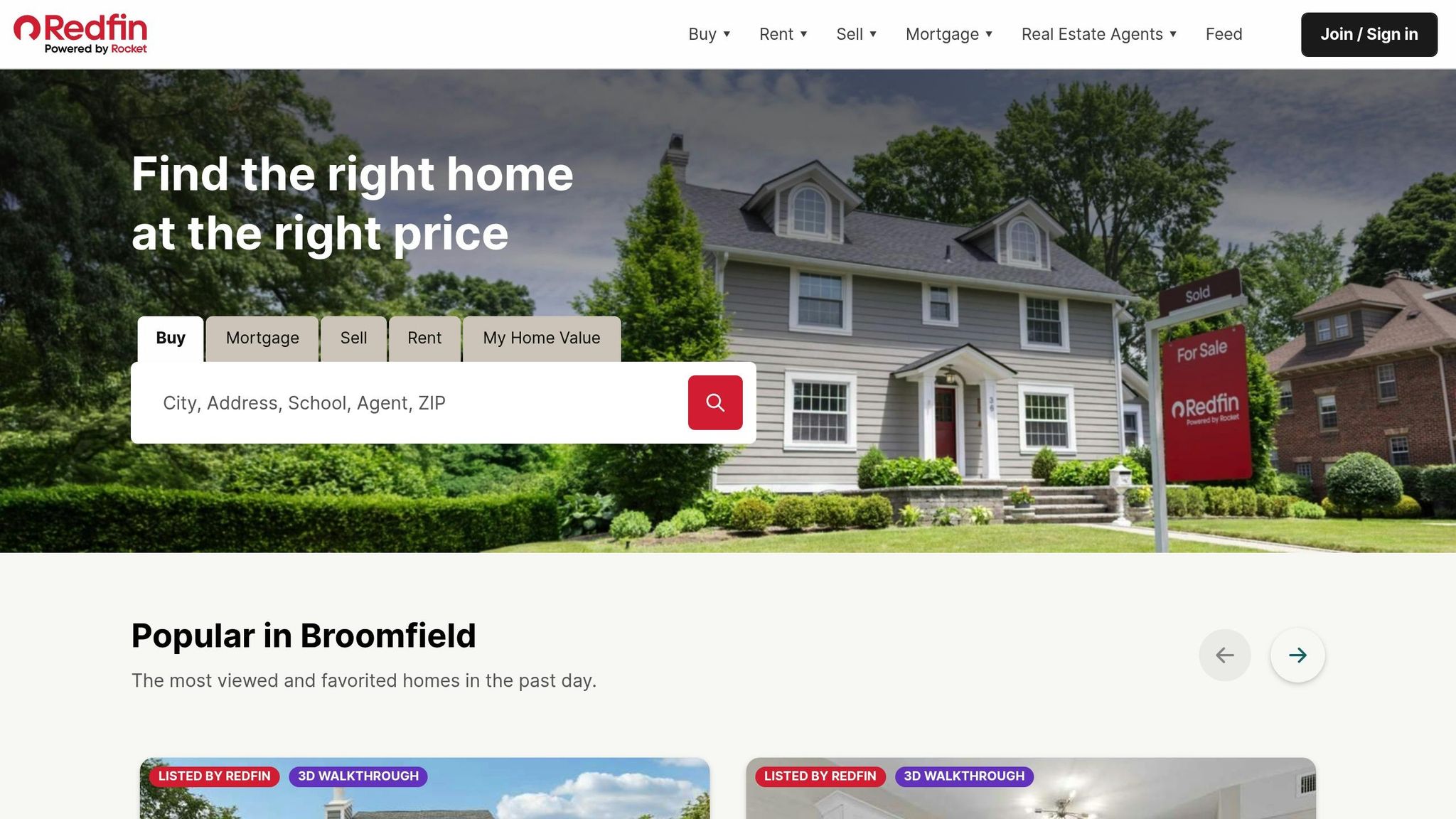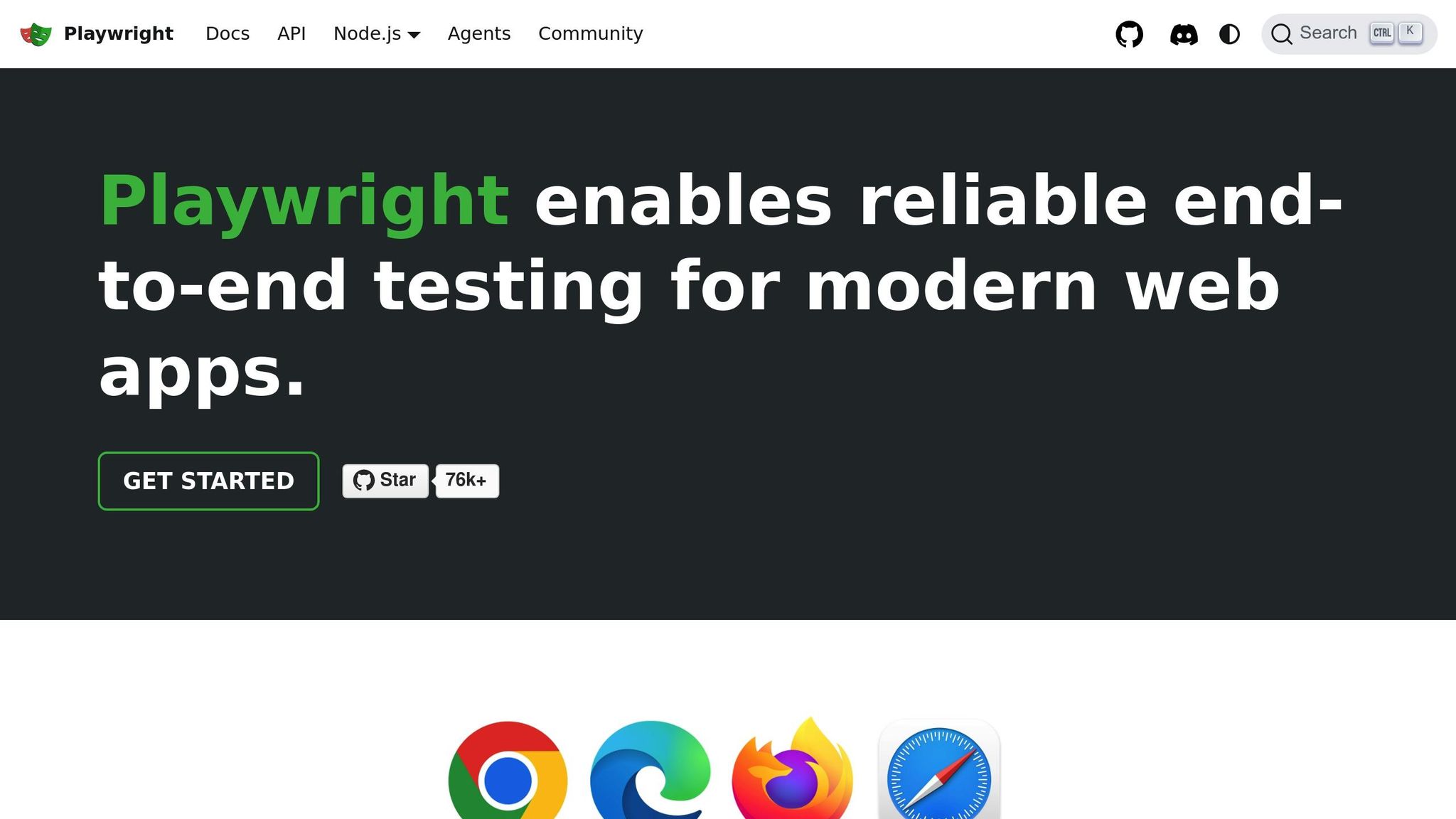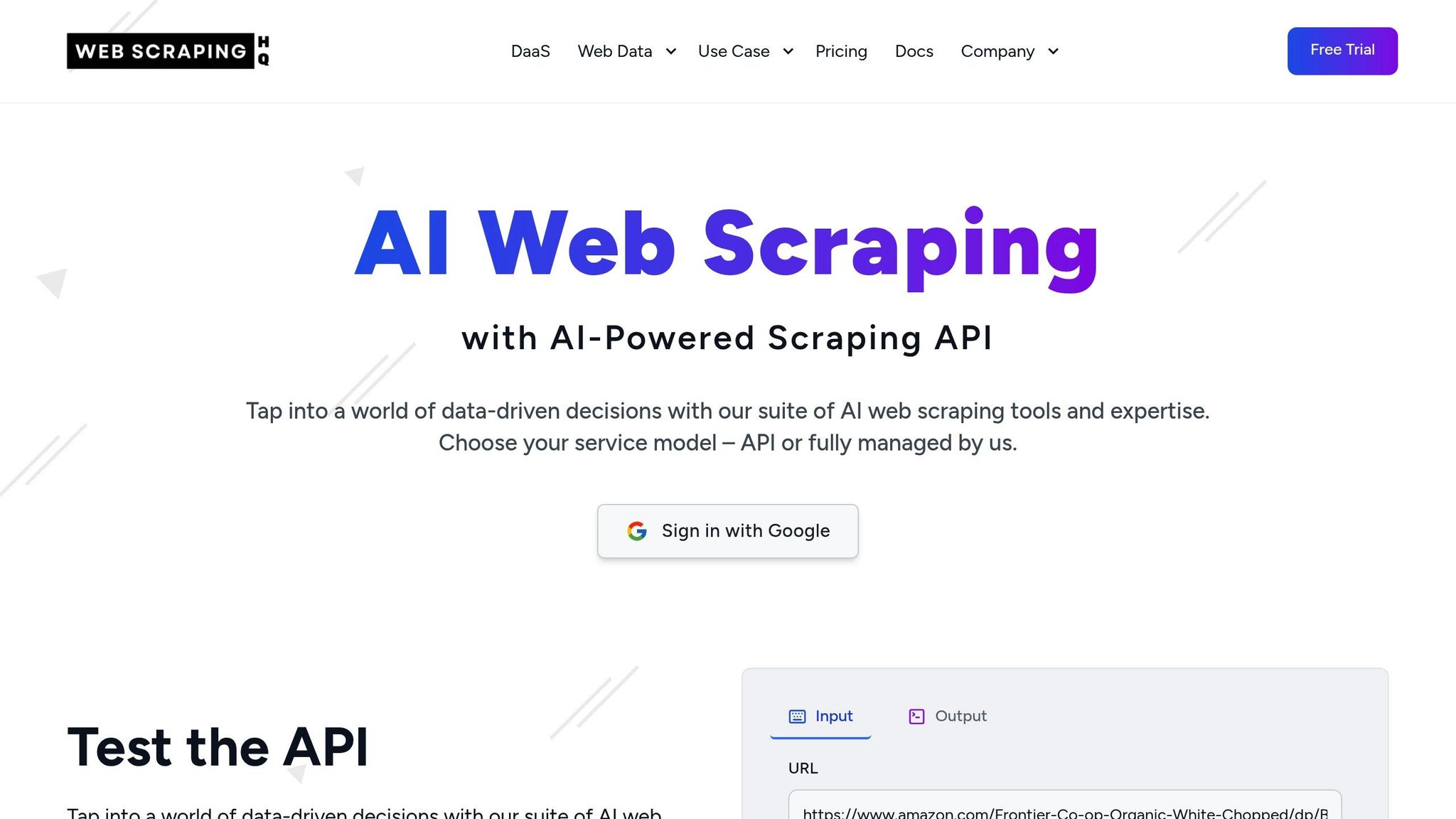
- Harsh Maur
- September 9, 2025
- 10 Mins read
- WebScraping
How to Scrape redfin data?
Scraping Redfin data involves extracting property listings, market trends, and pricing details from the platform for analysis. Here's a quick breakdown:
-
Why Scrape Redfin?
Automates data collection for tracking market trends, price changes, and managing property databases. This is useful for real estate professionals and analysts. -
Legal Considerations:
Ensure compliance with Redfin's Terms of Service and laws like CFAA and DMCA. Focus on publicly available data and respect server limits. -
Tools You'll Need:
Use Python (version 3.7+), libraries likerequests,BeautifulSoup,pandas, and tools likeScrapyorPlaywrightfor dynamic content. A virtual environment manager (e.g.,venv) helps keep dependencies isolated. -
How It Works:
Analyze Redfin's page structure or API endpoints, send requests, parse data, handle pagination, and save results in formats like CSV. For JavaScript-heavy pages, use Playwright for rendering. -
Challenges:
Overcome JavaScript rendering, anti-scraping defenses (e.g., CAPTCHAs, rate limits), and ensure data quality. Use proxies, user-agent rotation, and asynchronous scraping to scale efficiently. -
Managed Solutions:
Services like Web Scraping HQ can handle scraping, compliance, and data delivery for a monthly fee, saving time and effort.
Key Takeaway:
Scraping Redfin requires technical skills, legal awareness, and the right tools. For large-scale projects, managed services might be a better option over DIY methods.
Setup Requirements and Environment Preparation
Getting your environment ready with the right tools and libraries is essential for efficiently extracting property data while staying aligned with U.S. standards for currency, dates, and measurements. A well-prepared setup ensures everything runs smoothly.
Required Tools and Libraries
To extract and process property data from Redfin, you'll need a solid foundation of tools and libraries.
Start with Python - version 3.7 or higher is recommended to ensure compatibility with modern libraries. Use a virtual environment manager like venv or conda to keep your project dependencies isolated, avoiding conflicts with other Python setups on your system.
For coding, choose an IDE like Visual Studio Code or PyCharm. These tools make development easier with features like debugging, integrated terminals, and syntax highlighting, helping you fine-tune your scraping scripts.
Your core Python libraries will handle the heavy lifting. Use Requests (or the newer httpx) to send HTTP requests to Redfin's servers. For parsing HTML content, go with BeautifulSoup or parsel. When it comes to organizing and exporting data, pandas is indispensable for structuring property information and saving it to formats like CSV.
Since Redfin's content often relies on JavaScript, you’ll need tools for handling dynamic pages. Scrapy is perfect for large-scale scraping, while Playwright is great for navigating JavaScript-heavy property pages. These libraries enable you to access detailed data like price trends, images, and market analytics.
Redfin’s data includes U.S. dollar symbols and ISO 8601 timestamps. Use Python libraries like datetime and dateutil to reformat these into more readable formats.
Environment Setup Steps
-
Create a Project Folder
Start by setting up a dedicated folder for your project. Open your terminal or command prompt, navigate to your preferred location, and create a folder named something likeredfin_scraper. This keeps your files organized and easy to manage. -
Set Up a Virtual Environment
Inside your project folder, initialize a virtual environment withpython -m venv redfin_scraper(or usecondaif that's your preference). Activate the environment usingsource redfin_scraper/bin/activateon macOS/Linux orredfin_scraper\Scripts\activateon Windows. This ensures your project dependencies remain isolated. -
Install Essential Libraries
Use pip to install the libraries you need. Start withpip install requests beautifulsoup4 pandas. If your project involves dynamic content or large-scale scraping, addscrapyandplaywrightwithpip install scrapy playwright. For Playwright, don’t forget to runplaywright installto download the required browser binaries. -
Configure Your IDE
Link your virtual environment to your chosen IDE. This step ensures your code runs with the correct dependencies and provides features like autocompletion and syntax highlighting for the libraries you’ve installed. -
Test Your Setup
Write a quick script to verify everything is working. For example, create a simple Python file that imports your key libraries and sends a basic request to Redfin. This helps identify and fix any setup issues early on. Make sure the script handles formats like U.S. currency and date styles correctly. -
Organize Your Project Structure
Create folders within your project for scripts, data outputs, and configuration files. This structure will be invaluable as your project grows, especially when collecting large amounts of property data from multiple Redfin markets.
Once your environment is fully set up and tested, you’re ready to dive into scraping Redfin property listings.
How to Scrape Redfin Property Listings

Once your environment is set up, you’re ready to start extracting property listings from Redfin. The process involves analyzing Redfin’s page layout, sending requests to gather data, and organizing that data into usable formats.
Understanding and Accessing Redfin Pages
Redfin organizes its property data in two main ways: traditional HTML pages and private API endpoints that provide JSON data. Knowing how both work allows for more flexibility in your approach.
Begin by exploring Redfin’s search results pages. For example, if you’re looking for properties in Seattle, WA, or Austin, TX, you’ll notice URLs like redfin.com/city/[city-name]/[state-abbreviation]/filter/property-type=house. These often include parameters for location, property type, price range, and other filters.
To locate Redfin’s private API, open your browser’s developer tools, go to the Network tab, and filter by Fetch/XHR requests. As you navigate through search results, you’ll see API calls to endpoints like redfin.com/stingray/api/gis, which return JSON data with property details. Look out for parameters such as page_number, num_homes, and start, as they control pagination and the number of results per request.
Extracting Data from Static HTML Pages
When working with Redfin’s HTML pages, you can send HTTP requests to fetch the page content and then parse it. Here’s a Python function to get started:
import requests
from bs4 import BeautifulSoup
import pandas as pd
def fetch_redfin_page(url):
headers = {
'User-Agent': 'Mozilla/5.0 (Windows NT 10.0; Win64; x64) AppleWebKit/537.36'
}
response = requests.get(url, headers=headers)
return BeautifulSoup(response.content, 'html.parser')
Using this, you can extract key details like address, price, bedrooms, bathrooms, square footage, and lot size. Use BeautifulSoup to locate specific HTML elements, often identified with classes like homecard-address or homecard-price. Clean the data by stripping out symbols (like dollar signs and commas) and converting values into numerical formats where applicable.
You can extend this method to handle multiple pages seamlessly, ensuring you collect all available data.
Handling Pagination and Saving Data
Redfin’s search results often span multiple pages, so you’ll need a strategy for navigating through them. Using Redfin’s private API is the most efficient way to manage pagination.
Here’s an example function to scrape multiple pages via the API:
def scrape_multiple_pages(base_api_url, max_pages=10):
headers = {'User-Agent': 'Mozilla/5.0 (Windows NT 10.0; Win64; x64) AppleWebKit/537.36'}
all_properties = []
for page in range(1, max_pages + 1):
api_url = f"{base_api_url}&page_number={page}&start={(page-1)*20}"
response = requests.get(api_url, headers=headers)
if response.status_code == 200:
data = response.json()
properties = data.get('homes', [])
all_properties.extend(properties)
else:
break
return all_properties
For traditional HTML-based pagination, inspect the URL structure for patterns like ?page=2 or &offset=20. Modify these parameters in a loop to navigate through the pages. Once you’ve gathered the data, organize it into a pandas DataFrame. Format the data appropriately - convert prices into currency, use MM/DD/YYYY for dates, and ensure measurements are in imperial units. Finally, export the data to a CSV file with clear headers, such as "Address", "Price ($)", "Bedrooms", "Bathrooms", "Sq Ft", and "Lot Size."
Scraping Dynamic Content with Playwright or Scrapy

Some Redfin pages load data dynamically using JavaScript, making static scraping methods less effective. In such cases, tools like Playwright can automate interactions and capture dynamically loaded content. For example:
from playwright.sync_api import sync_playwright
def scrape_dynamic_redfin_page(url):
with sync_playwright() as p:
browser = p.chromium.launch(headless=True)
page = browser.new_page()
page.goto(url)
page.wait_for_selector('.property-details')
# Extract dynamically loaded content
price_history_elements = page.query_selector_all('.price-history-item')
price_history = [elem.inner_text() for elem in price_history_elements] if price_history_elements else []
property_details = page.inner_text('.property-details-summary')
browser.close()
return {"price_history": price_history, "property_details": property_details}
Scrapy can also handle dynamic content when combined with middleware like scrapy-playwright. This is particularly useful for pages that load content on scroll or require interaction. Additionally, check for JSON data embedded within <script> tags on the page, as it may simplify the extraction process.
Common Technical Challenges and Solutions
When attempting to scrape Redfin data, you’ll likely encounter technical hurdles like JavaScript rendering, anti-scraping defenses, and performance bottlenecks. Tackling these issues effectively can save you a lot of time and effort.
Handling JavaScript Rendering
Redfin’s reliance on JavaScript to load critical data - like property details, price histories, and maps - poses a challenge for scraping. A simple HTTP request won’t capture this dynamic content since it’s rendered after the initial HTML response. This makes JavaScript rendering a key obstacle when working with Redfin data.
To address this, browser automation tools like Playwright are indispensable. These tools simulate a real browser, allowing JavaScript to fully load before data extraction. Here’s an example of how to configure Playwright to manage Redfin’s JavaScript-heavy pages:
from playwright.sync_api import sync_playwright
def scrape_with_javascript_rendering(url):
with sync_playwright() as p:
browser = p.chromium.launch(headless=True)
context = browser.new_context(
user_agent='Mozilla/5.0 (Windows NT 10.0; Win64; x64) AppleWebKit/537.36'
)
page = context.new_page()
# Navigate and wait for dynamic content
page.goto(url)
page.wait_for_selector('.property-details', timeout=10000)
page.wait_for_load_state('networkidle')
# Extract data loaded via JavaScript
property_data = page.evaluate('''() => {
const priceElement = document.querySelector('.price');
const addressElement = document.querySelector('.address');
return {
price: priceElement ? priceElement.textContent : null,
address: addressElement ? addressElement.textContent : null
};
}''')
browser.close()
return property_data
This approach ensures JavaScript-rendered data is captured without excess complexity. If you’re using Scrapy, integrating it with Playwright or middleware like Splash can also handle JavaScript rendering while maintaining Scrapy’s concurrency advantages.
Bypassing Anti-Scraping Measures
Redfin employs several anti-scraping tactics, such as CAPTCHAs, IP blocking, and request rate limits. To navigate these defenses, you’ll need a combination of strategies.
- Rotating proxies are essential. Services like Scrapingdog provide free credits to distribute requests across multiple IP addresses, reducing the chance of detection. Here’s how you can implement proxy rotation:
import requests
import random
class ProxyRotator:
def __init__(self, proxy_list):
self.proxies = proxy_list
self.current_index = 0
def get_next_proxy(self):
proxy = self.proxies[self.current_index]
self.current_index = (self.current_index + 1) % len(self.proxies)
return proxy
def make_request(self, url):
proxy = self.get_next_proxy()
headers = {
'User-Agent': random.choice([
'Mozilla/5.0 (Windows NT 10.0; Win64; x64) AppleWebKit/537.36',
'Mozilla/5.0 (Macintosh; Intel Mac OS X 10_15_7) AppleWebKit/537.36',
'Mozilla/5.0 (X11; Linux x86_64) AppleWebKit/537.36'
])
}
try:
response = requests.get(url, headers=headers, proxies=proxy, timeout=10)
return response
except requests.exceptions.RequestException:
# Try with the next proxy if the current one fails
return self.make_request(url)
- User-agent spoofing adds another layer of disguise, making your requests appear to come from various browsers and devices. Pair this with random delays (2-5 seconds) between requests to mimic human behavior.
While CAPTCHAs may occasionally appear, the best approach is to avoid triggering them in the first place by pacing requests carefully and using proxies effectively.
Large-Scale Data Collection Optimization
When scaling up to scrape data for thousands of properties across multiple markets, optimizing performance becomes crucial. Techniques like concurrent and parallel requests can dramatically cut down the time needed for large datasets.
If you’re using Scrapy, its built-in concurrency settings are a great starting point. Here’s how you can configure them:
# settings.py for Scrapy
CONCURRENT_REQUESTS = 16
CONCURRENT_REQUESTS_PER_DOMAIN = 8
DOWNLOAD_DELAY = 2
RANDOMIZE_DOWNLOAD_DELAY = 0.5
For asynchronous scraping, using aiohttp and asyncio is another effective option:
import asyncio
import aiohttp
from bs4 import BeautifulSoup
async def fetch_property_data(session, url, semaphore):
async with semaphore:
try:
async with session.get(url) as response:
html = await response.text()
soup = BeautifulSoup(html, 'html.parser')
# Extract property data here
return extract_property_details(soup)
except Exception as e:
print(f"Error fetching {url}: {e}")
return None
async def scrape_multiple_properties(urls):
semaphore = asyncio.Semaphore(10) # Limit concurrent requests
async with aiohttp.ClientSession() as session:
tasks = [fetch_property_data(session, url, semaphore) for url in urls]
results = await asyncio.gather(*tasks)
return [result for result in results if result is not None]
To manage extremely large datasets, consider using a queue system to pause and resume scraping sessions. Writing data to disk in batches can also prevent memory issues. Combining these techniques ensures you can efficiently scrape large volumes of data across multiple Redfin markets.
sbb-itb-65bdb53
Managed Scraping Solutions: Web Scraping HQ

When it comes to tackling the technical hurdles of web scraping, a managed solution can save you time and resources. While building your own scraping infrastructure might work for smaller projects, scaling up to handle thousands of listings across multiple markets can quickly become overwhelming. That’s where managed services like Web Scraping HQ step in, allowing you to focus on analyzing data while experts handle the heavy lifting.
To ensure quality, Web Scraping HQ employs a dual-layer QA process that identifies and resolves data inconsistencies, missing fields, and formatting issues before delivering the results. The platform also scales effortlessly - whether you’re tracking 100 properties in a single market or monitoring 50,000 listings across multiple states. This means you don’t have to worry about managing servers or optimizing concurrent requests.
Additionally, their team includes specialists in real estate data extraction, offering expert guidance for custom data schemas or unique challenges specific to your needs.
Why Choose Web Scraping HQ for Real Estate Data?
The Standard plan, priced at $449/month, provides consistent, high-quality real estate data without the hassle of managing technical details. This plan includes automated QA, compliance monitoring, and structured data formats - everything you need to extract Redfin data efficiently at scale.
For businesses with more specific needs, the Custom plan starts at $999/month. This tier offers tailored data schemas, enterprise-level service agreements, and priority support. It’s ideal for companies requiring custom field extraction, geographic filtering, or seamless integration with existing workflows.
Key Takeaways for Redfin Data Scraping
Extracting data from Redfin is no small feat - it requires a well-thought-out strategy that combines technical know-how with a strong understanding of legal boundaries. The challenges involved are layered and complex, ranging from dealing with dynamic JavaScript content to overcoming advanced anti-scraping defenses like CAPTCHAs, rate limits, and IP bans.
To tackle these challenges, many turn to managed web scraping services. These services simplify the process by handling both the technical and compliance-related complexities. Managed solutions deliver structured, ready-to-use data much faster than DIY methods. While a DIY approach might take weeks to develop and maintain, managed services can provide production-ready data in as little as 5 business days for standard implementations - or even within 24 hours for custom solutions. This efficiency makes them an attractive option for those looking to save time and resources.
FAQs
Get answers to frequently asked questions.
Scraping publicly available data from any websites is not illegal. There is no such laws which prohibits scraping of publicly available data.
Yes, You can download data from Redfin, Here are the steps to scrape and download data from a Redfin website. *Visit to webscraping HQ website *Login to web scraping API *Paste the url into API and wait for 2-3 minutes *You will get the scraped data.
There is no Redfin API publicly available although you can scrape through Webscraping HQ’s Redfin Scraper tool.